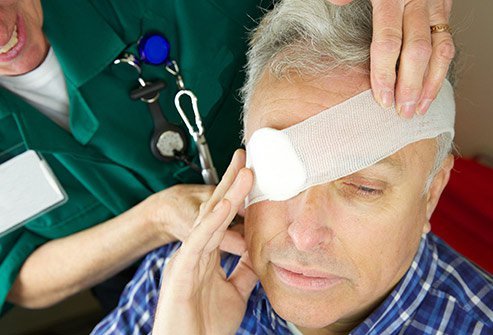Can an Optometrist Remove Foreign Bodies?
Can an optometrist remove foreign bodies?

Some foreign bodies in the eye may be simple and go away on their own, whereas others require removal. Removal of foreign bodies from certain parts of the eye, such as the cornea, eyelid, or conjunctiva - with any appropriate instrument other than a scalpel or needle - can be performed by an optometrist as per the laws in the US.
The following types of foreign bodies can be treated by an optometrist
- Foreign bodies that are small.
- They should not be penetrating deeper structures of the eye.
- Injury caused by the foreign body should be minor and superficial.
- Foreign bodies should not involve surgical removal or repair.
Besides these, all other foreign bodies in other parts of the eye that penetrate deeper structures, causing significant discomfort, disfigurement, bleeding or surgery require intervention by an ophthalmologist (eye doctor).
What are optometrists, ophthalmologists and opticians?
Optometrist
An optometrist is someone who can provide primary eye care. They examine, diagnose and treat eyes for vision, eye diseases and minor injuries. Optometrists can prescribe medications for eye problems and diseases depending on the state or country where they practice. In the US after obtaining a bachelor’s degree, they spend four years in a professional program and receive a Doctor of Optometry degree. Some undergo further training or specialty fellowship. For example, some optometrists specialize in treating low-vision patients, whereas some specialize in treating children. Optometrists are not the same as ophthalmologists or opticians.
Ophthalmologist
An ophthalmologist is a medical doctor (MD) who specializes in eye and vision care. Ophthalmologists are trained to perform eye exams and diagnose and treat all diseases of the eyes medically and surgically. They also correct refractive errors by prescribing eyeglasses and contact lenses. In the US, ophthalmologists complete four years of college to obtain a bachelor’s degree, four years of medical school, one year of internship and a minimum of three years of hospital-based residency in ophthalmology. They can also undergo further specialized training or do specialized clinical fellowships. For example, some ophthalmologists may specialize in treating the cornea, whereas some may specialize in treating the retina.
An optician is not an eye doctor, but an important part of the eye care team. Opticians use prescriptions from an optometrist or ophthalmologist to fit and sell eyeglasses and other eyewear. Opticians typically have a high school diploma or an equivalent, an associate’s degree, or a certificate from a community college or technical school and on-the-job training. Some states require opticians to be licensed.
What are the symptoms of a foreign body in the eye?
- Pain, discomfort, irritation, watering and redness of the affected eye
- Feeling of something stuck in the eye or scratching while blinking or moving the eyes
- Blurred vision or, rarely, vision loss
- Bleeding
What are the first aid measures for foreign body in the eye?
In the case of foreign bodies or pollutants, such as an eyelash or dust, these first aid measures could remove the foreign body and no further treatment may be necessary. In other cases, medical attention is required after administering first aid measures
- A saline solution, clean water or distilled water may be used to rinse and cleanse the eye. This can effectively flush out simple foreign bodies and pollutants from the eye. Chlorinated water should be avoided because chlorine can irritate the eye. A water fountain or running water from a tap or shower acts as a great water flush.
- One can try to gently wipe the eye with a cotton tip or tissue, but rubbing the eyes should be avoided.
- Rubbing the eyes, taping or dressing the eyes should be avoided.
- A Styrofoam or paper cup can be cut at an angle to sit over the face, covering the eye to protect the eye after an injury until one can receive medical help. This protects the eye without applying pressure over the eye.
How does an optometrist remove foreign bodies from the eye?
Nonpenetrating foreign bodies can be removed on an outpatient basis by an optometrist or ophthalmologist. Local anesthetic eye drops may be used to provide pain relief during the procedure. An optometrist does not use a scalpel or needle to remove the foreign body. If a foreign body requires a needle or scalpel to be removed, the procedure must be performed by an ophthalmologist. After foreign body removal, antibiotic eye drops to prevent or treat infection and painkillers may be prescribed. Minor scratches on the cornea (corneal abrasion) usually heal with antibiotic eye drops. Minor injuries usually heal in three to four days. It is important to keep up with follow-up appointments.

